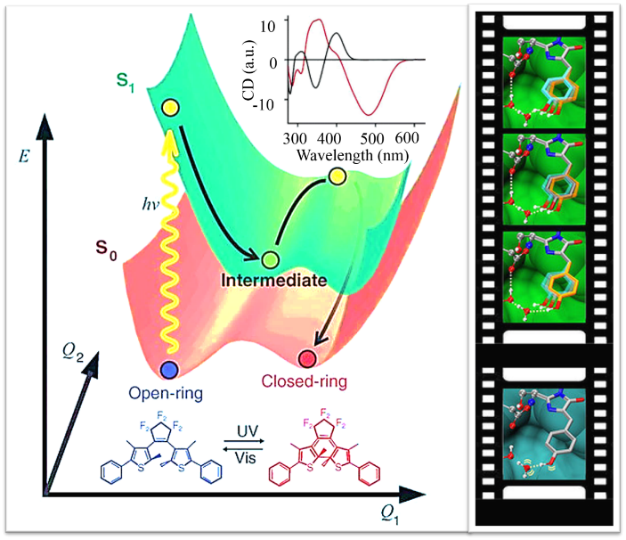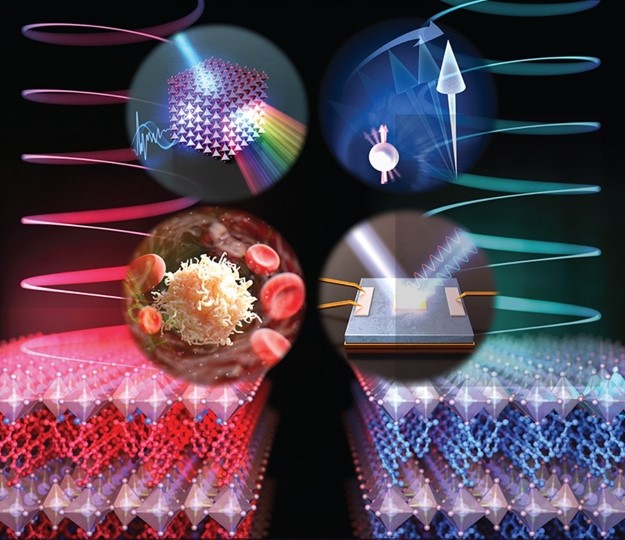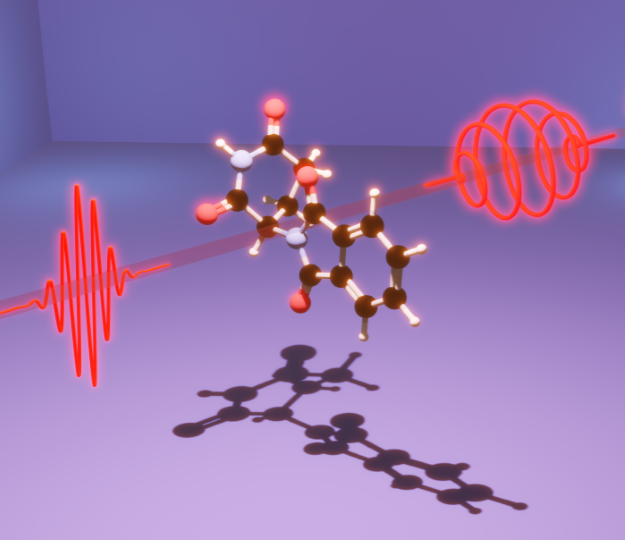Chirality - the handedness of a molecule - has a profound impact on chemistry and biology ranging from asymmetric catalysis to drug designing. Several emerging research thrusts in materials chemistry engage chiral nanomaterials and chiral plasmonics for efficient solar light harvesting, enantioselective photocatalysis, and spin-based devices. Despite its paramount importance, however, how chirality influences the functional dynamics of (bio)-molecular and material systems are not properly understood. In our group we develop and employ femtosecond chiroptical spectroscopy to understand excited-state chirality and leverage it to address pressing challenges in chemistry, biology and materials science.
Chiral Femtochemistry: Ultrafast Broadband Circular Dichroism Spectroscopy

Among various spectroscopic methods, Circular Dichroism spectroscopy (CD) stands out for its unique sensitivity to chiral-optical and magneto-optical interactions through light polarization. This makes time-resolved circular dichroism spectroscopy an ideal technique to probe photoinduced chiral structure and spin depolarization dynamics in chemical, biological and material systems. We are currently building novel ultrafast optical setup for highly sensitive measurements of broadband time-resolved circular dichroism spectra with femtosecond time resolution. It will bring in novel new insights about chiral dynamics on excited states. This in turn will provide the necessary design principles to synthesize molecules and materials with strong chiroptical properties.
Chiral Spintronics: Ultrafast Chiral (Magneto)-Optical Dynamics of Advanced Materials

Advanced materials such as perovskites, transition metal dichalcogenides etc. exhibit the potential to store quantum information in individual electrons that may hold the key to the next generation of quantum computers and quantum communication. Understanding the spin or valley-dependent photophysics of different photoexcited species like carriers and excitons in these materials is important to optimize their function. To this goal, we employ ultrafast chiral-optical and magneto-optical spectroscopy to study their spin, valley and magnetization dynamics. These studies aim to shed new light on their spin or valley-dependent photophysics and will provide the necessary design principles to develop spintronics materials with long spin lifetimes.
Instrumentation: Development of Novel Chiroptical Spectroscopy Techniques

A complete understanding of structure-dynamics-property correlations would require following the structural dynamics of (bio)-molecules and materials from the shortest time onwards, ideally with femtosecond time-resolution. This is hindered, however, by the structural-temporal gap that exists in the field of optical spectroscopy. An important part of our research effort is directed towards diminishing the gap through the development of novel chiroptical techniques which simultaneously provide high temporal resolution and structural sensitivity. This involves pushing the current chiroptical techniques such as time-resolved Circular Dichroism (CD), Circularly Polarized Luminescence (CPL), Raman Optical Activity (ROA) beyond state-of-the-art.
